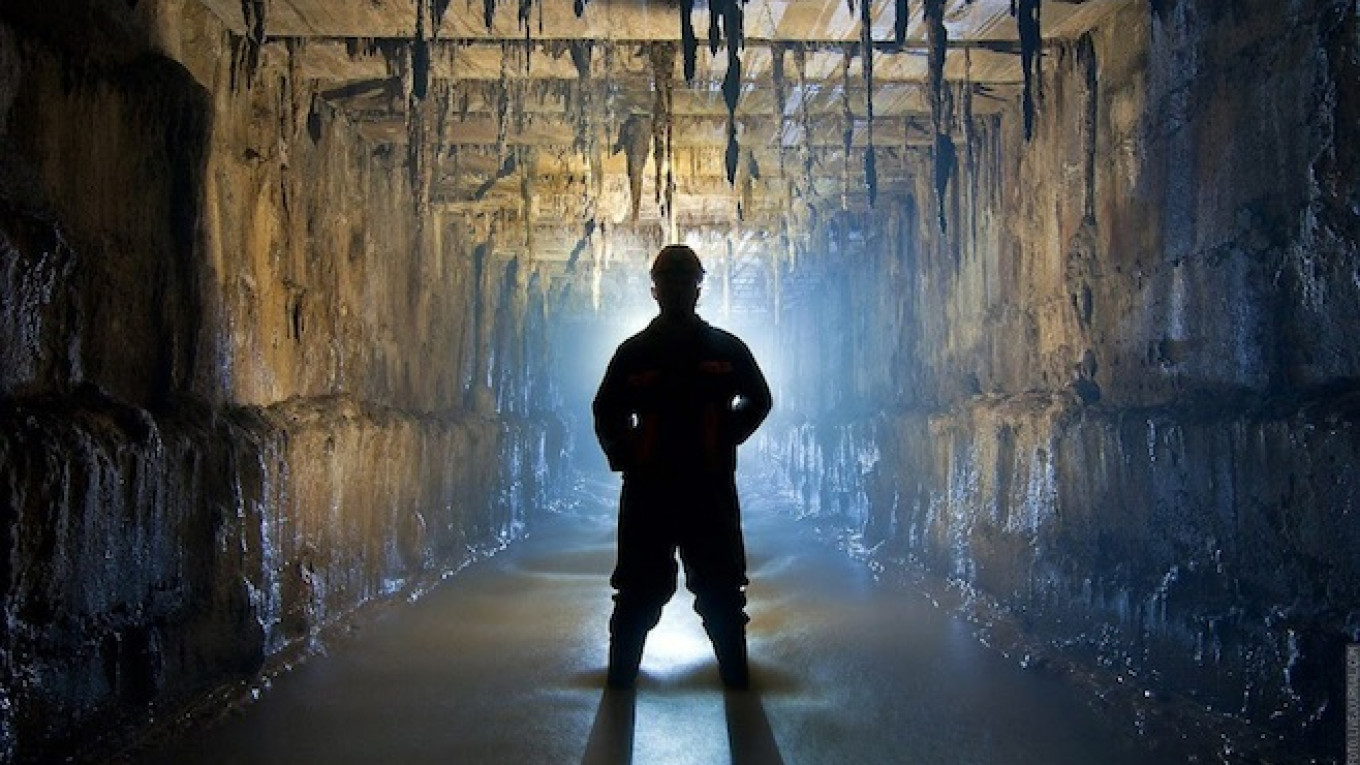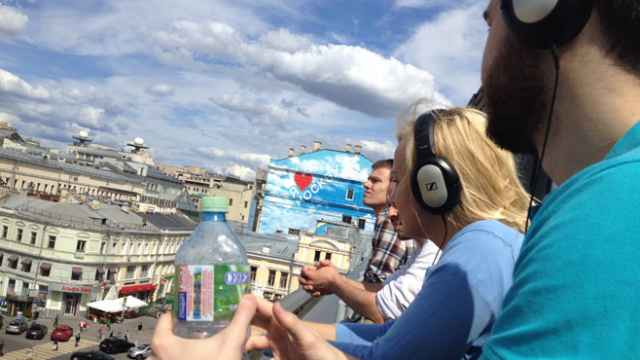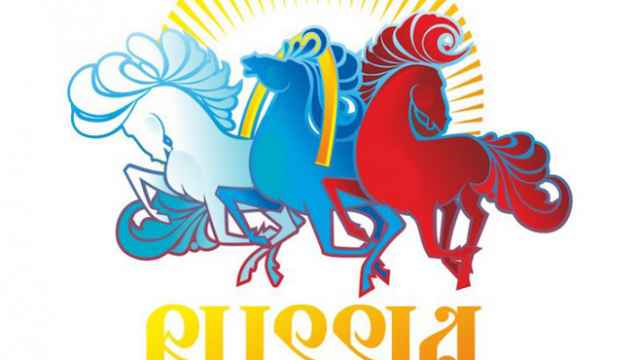As we stand by the banks of a stream — a small sliver of green hidden in Moscow's urban sprawl — every member of our group is focused on the low shadowy tunnel that opens up where the water flows under a busy highway bridge.
Our guide beckons us, and we wade out into the river, slowly, until we reach a small ledge alongside the tunnel's concrete wall.
Steadily, the water changes from the bubbling clear flow of the stream to a deep, swirling grey. In the gloom, we can see the watermark far above our heads, showing just how high the water can get after a heavy rainfall. The booming echoes of the traffic rumbling above fills the tunnel as a choking feeling of claustrophobia begins to set in.
Although the city sits just a few meters above us, we are completely cut off.
This is no ordinary tourist excursion. We are joining the world of the Diggers — urban explorers who travel the depths of Moscow's storm drains and utility tunnels to discover what hides below the streets of the Russian capital.
The Digger movement exploded with the invention of the internet, but its roots run far deeper, back to the work of archeologists such as Ignatius Stelletsky, who worked in tunnels under Moscow's monasteries and even excavated under the Kremlin itself at the turn of the 20th century.
Our guide, Danil Davydov, is one of the city's most experienced urban cavers. He has been exploring these tunnels since 1999.
As a teenager, Davydov was drawn to the challenge and mystery of the underground. There is a powerful adrenaline rush in entering this hidden world, often amplified by the fight to avoid security cameras or police detection, but this is far from the only draw. Like many Diggers, Davydov talks passionately about the beauty of the architecture, the sheer scale of engineering skill, the weight of hidden history that lies neglected beneath the streets. His arm is even tattooed with Stelletsky's face. At first, Digging was only a hobby, but now Davydov leads excursions through Moscow's tunnels full time.
The fear begins to pass as our eyes adjust and we reach the mouth of the storm drain. The floor is solid here, and the steady flow of water only runs up to our ankles. Davydov walks confidently, occasionally stopping to help his guests scale a small waterfall or to point out a feature in the network of tunnels.
The water in the tunnels does not come only from the rivers; much of it is pumped into them from the passages of the Metro system.
Davydov describes the tunnel system as tens of small, underground villages; on today's excursion, we will visit only one.
There are roughly 180 rivers and streams in Moscow — twice as many as in St. Petersburg. They flow in underground tunnels ranging from anywhere between 35 centimeters to 6 meters in diameter. Today they are visible only in the layout of the streets that follow the old river banks.
Davydov's confidence is infectious, and we start to make good progress through the drains. Of course, he tells us, urban exploring can be dangerous — no ambulance will be able to reach us here — but some common sense and some simple rules can radically reduce the risks.
Davydov says that he is diabetic, but a little bit of simple preparation — such as carrying some juice boxes – helps him avoid problems underground.
Once down in the tunnels, it is clear that they are not as deserted as they appear at first glance. One mysterious scrawl of numbers and letters on the wall are a clue for one of Moscow's popular quest games. Davydov says he has even bumped into other tour groups while working down here.
There are rarely problems with the police he tells us, despite the technical illegality of these tunnel trips. The urban exploration movement is, as a whole, dedicated to preserving these sites, although their reputation is often tarnished by vandals. For a true urban explorer, a simple photo is the real badge of honor after a day of hard work.
Davydov proudly shows off a photo of him and his friends at the foot of a thundering 27-meter waterfall in one of the capital's storm drains. The team made the trip in the early hours of the morning to avoid being swept away.
A photograph too, is the end goal of our tour, at a slightly smaller, four-meter-high waterfall. As we squeeze ourselves down a smaller pipe and climb one last cascade, we see it for the first time. It truly is, as Davydov says, an engineering marvel we never would have imagined from the world above.
More information on underground tours of Moscow can be found at www.podzemly.ru.
A Message from The Moscow Times:
Dear readers,
We are facing unprecedented challenges. Russia's Prosecutor General's Office has designated The Moscow Times as an "undesirable" organization, criminalizing our work and putting our staff at risk of prosecution. This follows our earlier unjust labeling as a "foreign agent."
These actions are direct attempts to silence independent journalism in Russia. The authorities claim our work "discredits the decisions of the Russian leadership." We see things differently: we strive to provide accurate, unbiased reporting on Russia.
We, the journalists of The Moscow Times, refuse to be silenced. But to continue our work, we need your help.
Your support, no matter how small, makes a world of difference. If you can, please support us monthly starting from just $2. It's quick to set up, and every contribution makes a significant impact.
By supporting The Moscow Times, you're defending open, independent journalism in the face of repression. Thank you for standing with us.
Remind me later.






